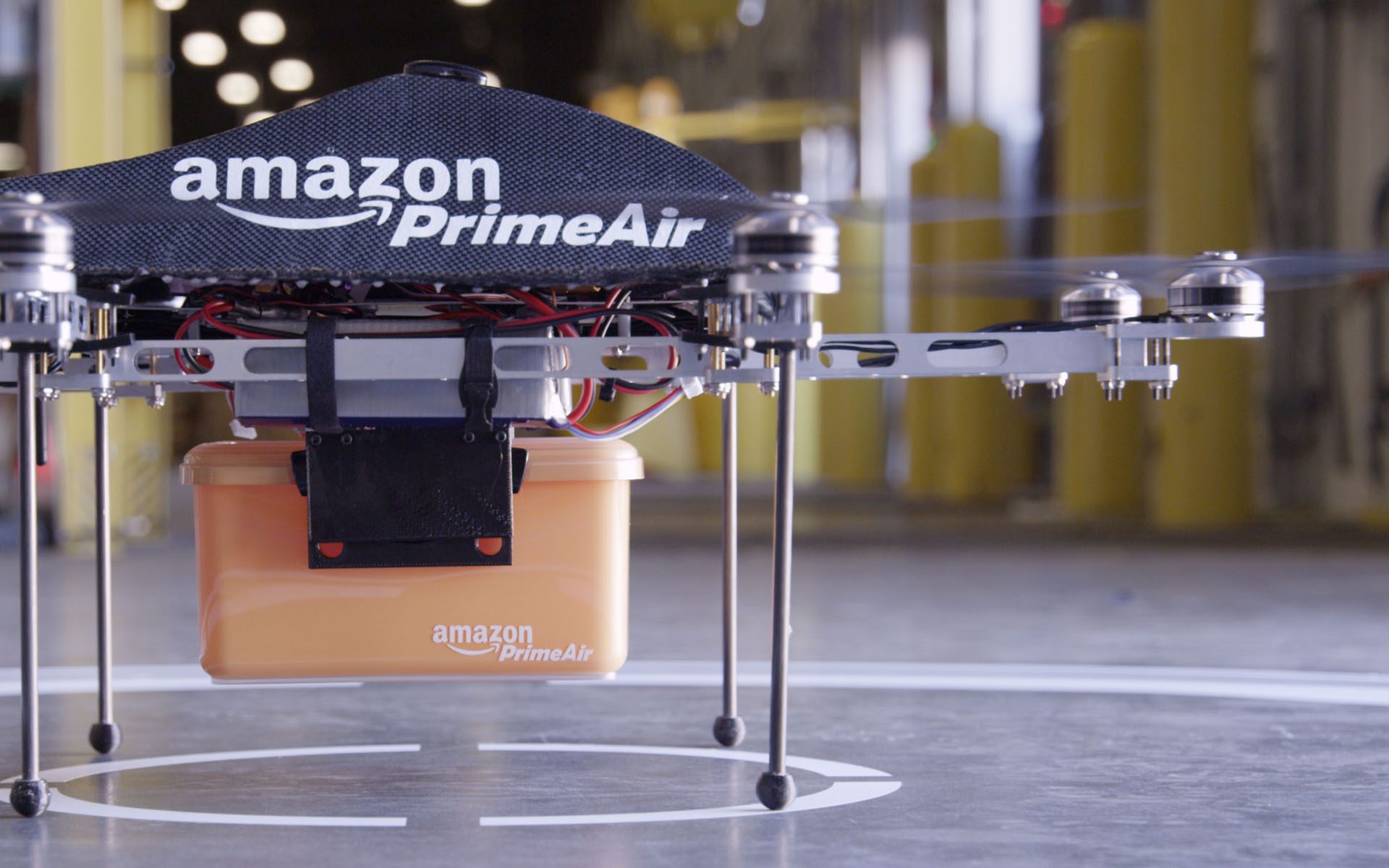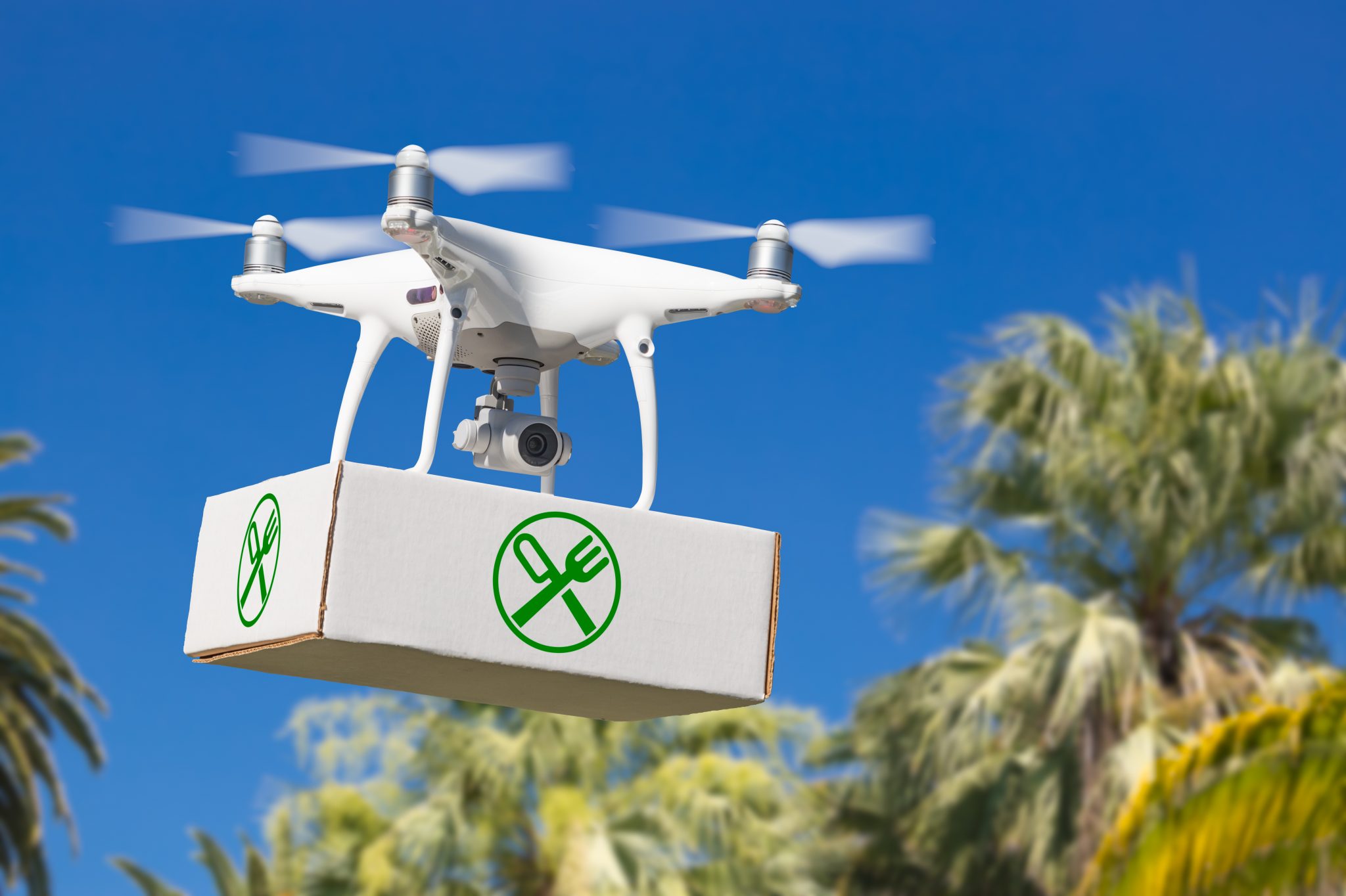Amazon drone delivery locations are rapidly expanding, revolutionizing how we receive packages. This guide dives into the current status, future plans, and societal impact of this innovative delivery system. We’ll explore the factors influencing location selection, from infrastructure and regulations to community acceptance and technological advancements. Get ready to soar into the future of delivery!
We’ll examine the technological infrastructure supporting these deliveries, including drone hubs and communication networks. Understanding the challenges of implementing drone delivery in various environments – urban, suburban, and rural – is key to grasping the complexities of this emerging industry. We’ll also analyze the economic and social consequences, considering both the potential benefits (like job creation) and drawbacks (such as environmental concerns).
Finally, we’ll look at real-world examples to illustrate the practical applications and potential of Amazon’s drone delivery program.
Amazon Drone Delivery Locations: A Comprehensive Overview
Amazon’s drone delivery program represents a significant leap in e-commerce logistics. This article provides a detailed look at the current status, future expansion plans, and the broader economic and social implications of this innovative delivery method.
Current Amazon Drone Delivery Program Status
Amazon’s drone delivery service, officially known as Amazon Prime Air, is currently operational in a limited number of locations. The program’s geographical reach is expanding gradually, influenced by factors such as regulatory approvals, technological advancements, and infrastructure development.
| State | City | Launch Date (Approximate) | Service Details |
|---|---|---|---|
| California | Lockeford | 2022 | Residential deliveries within a limited radius. |
| Texas | College Station | 2022 | Residential deliveries, focusing on package size and weight limitations. |
| Arkansas | Drone Delivery Hub | 2022 | Acts as a central hub for drone operations in the region. |
Currently, eligible packages are typically smaller and lighter items, ensuring safe and efficient drone delivery. The types of goods vary depending on the specific location and operational parameters. The technological infrastructure supporting Amazon Prime Air includes dedicated drone hubs equipped with charging stations, maintenance facilities, and sophisticated flight control systems. Robust communication networks ensure seamless drone navigation and data transmission during delivery operations.
Factors Influencing Location Selection for Drone Delivery
Amazon’s location selection for drone delivery is a multi-faceted process involving careful consideration of several key factors.
Population density is a critical factor. Higher density areas offer a larger potential customer base but present significant logistical challenges regarding airspace management and delivery route optimization. Suburban areas offer a balance between customer density and simpler airspace management, while rural areas present unique challenges related to infrastructure limitations and longer delivery distances. The regulatory environment, including airspace restrictions and local ordinances, plays a crucial role in determining suitable locations.
Finally, community acceptance and engagement are vital for successful program implementation, ensuring a smooth integration of drone delivery into the local ecosystem.
Future Expansion Plans and Predictions, Amazon drone delivery locations

Amazon plans to significantly expand its drone delivery network in the coming years. This expansion will be driven by technological advancements, regulatory changes, and increasing customer demand.
- Expansion into additional states in the US, potentially focusing on areas with existing robust infrastructure and favorable regulatory environments.
- Exploration of international markets, beginning with countries that have supportive regulatory frameworks and a high density of online shoppers.
- Increased drone fleet size to accommodate growing delivery volumes and expanded service areas.
Technological advancements, such as improved battery technology, autonomous navigation systems, and enhanced drone safety features, will play a crucial role in accelerating the expansion of drone delivery locations. A hypothetical expansion strategy would involve phased rollouts, starting with pilot programs in strategically chosen locations, followed by gradual expansion based on data analysis and performance evaluation. Careful consideration of local regulations, community engagement, and infrastructure development will be essential for each new market entry.
Economic and Social Impacts of Drone Delivery Locations

The economic and social impacts of Amazon’s drone delivery program are multifaceted and require careful consideration.
| Location Type | Job Creation | Efficiency Gains | Economic Impact |
|---|---|---|---|
| Urban | Potential for new jobs in drone maintenance, operations, and related fields. | Faster delivery times, reduced transportation costs. | Increased economic activity in local communities. |
| Suburban | Similar to urban areas, with potential for employment opportunities in logistics and support services. | Improved delivery efficiency, reduced reliance on traditional transportation. | Positive economic impact on local businesses. |
| Rural | Potential for job creation in rural areas, addressing workforce challenges. | Improved access to goods and services, bridging the gap between urban and rural areas. | Stimulation of economic growth in underserved communities. |
While drone delivery offers significant economic benefits, potential social impacts must also be considered. These include potential job displacement in traditional delivery sectors, concerns about data privacy, and the environmental impact of drone operations. Successful programs, such as Amazon’s initial deployments, demonstrate the positive potential, while unsuccessful initiatives highlight the importance of careful planning and community engagement.
Illustrative Examples of Drone Delivery in Action

Let’s consider three distinct drone delivery scenarios:
Scenario 1: Urban Apartment Building. A customer orders a small item from Amazon. The drone takes off from a nearby hub, navigates through city airspace using GPS and obstacle avoidance technology, and lands on a designated rooftop landing pad. The package is retrieved by the customer. Safety measures include geofencing, collision avoidance systems, and real-time monitoring.
Scenario 2: Suburban Home. A drone delivers a package to a suburban house. The drone uses GPS and visual navigation to locate the house, then lowers the package using a cable system to a designated drop-off point in the yard. The customer retrieves the package upon arrival. Safety features include pre-programmed flight paths and automatic return-to-base functionality.
Scenario 3: Rural Farm. A drone delivers medical supplies to a remote farm. The drone uses advanced navigation systems to reach the farm, even in challenging terrain. The package is lowered using a cable system. Safety measures include redundant systems, real-time monitoring, and contingency plans for unexpected events.
A step-by-step visual representation of a drone delivery would involve: 1. Drone receives delivery order; 2. Drone prepares for flight; 3. Drone takes off and navigates to delivery location; 4. Drone identifies delivery point; 5.
Drone lowers package; 6. Drone confirms delivery; 7. Drone returns to base.
Wrap-Up
Amazon’s drone delivery program is transforming the logistics landscape, offering faster and more efficient delivery options. While challenges remain, the potential benefits – from economic growth to improved access to goods – are substantial. As technology advances and regulations evolve, we can expect to see continued expansion and refinement of this innovative delivery method, reshaping how we receive our online purchases in the years to come.
The future of delivery is in the air!
FAQ Guide
What types of packages are eligible for Amazon drone delivery?
Currently, Amazon’s drone delivery program typically handles smaller, lighter packages. The specific weight and size limits may vary.
How fast is drone delivery compared to traditional methods?
Drone delivery offers significantly faster delivery times, often within minutes or hours, depending on distance and other factors, compared to ground-based delivery.
What safety measures are in place for Amazon drone deliveries?
Amazon employs multiple safety features, including advanced sensors, obstacle avoidance systems, and redundancy protocols to ensure safe and reliable drone operations.
Are there any environmental concerns related to drone delivery?
While drones offer efficiency gains, concerns about noise pollution, energy consumption, and potential battery waste are being addressed through technological improvements and sustainable practices.